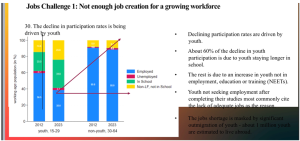
By J. N. Halm
I remember vividly my first visit to Cape Coast Castle some years ago. Standing in front of that imposing structure, with its whitewashed walls gleaming against the Atlantic backdrop, I felt a mixture of awe, curiosity, and that peculiar nervousness that comes with experiencing something truly significant for the first time.
What made that visit more memorable was an interesting exchange between one of my travelling companions and the guide. The good friend Markus was upset that the guide referred to the priest inside one of the rooms within the castle as a “fetish” priest. He wanted to know why the guide did not just say a priest. Needless to say, it was quite an interesting exchange that left a mark on that day.
Fast forward to my most recent visit to the same location—my fifth, I believe—and the experience was markedly different. I knew exactly what to expect, and because this time I was with a couple of friends, I was even confidently playing the role of the knowledgeable local.
This personal reflection brings me to a fascinating piece of research that recently caught my attention in the March 2021 edition of the Journal of Travel Research. This particular research was titled “First-Time versus Repeat Tourism Customer Engagement, Experience, and Value Co-creation: An Empirical Investigation”. The study delved into something that every tourism professional should understand but many overlook: the fundamental differences between how first-time visitors and repeat customers engage with destinations, and how these differences ultimately determine whether they will return.
The research reveals what many in the hospitality and tourism industry have long suspected but never quite articulated—that customer engagement is not a one-size-fits-all concept. Just as my experience at Cape Coast Castle evolved from that initial wide-eyed wonder to a more nuanced, confident familiarity, so too do customers’ engagement patterns shift dramatically between their first visit and subsequent returns.
The Engagement Evolution
Customer engagement in tourism, according to this ground-breaking study, is far more complex than simply ensuring visitors have a good time. It is about creating meaningful connections that transform casual visitors into destination advocates. Think of it as the difference between a polite handshake and a warm embrace—both are forms of greeting, but one creates a lasting impression that makes you want to see that person again.
The researchers discovered that engagement operates on multiple dimensions, each affecting the customer experience differently. Some dimensions focus on the emotional connection—that feeling I had standing in the chapel above the holding cells. Others centre on behavioural aspects—the choices visitors make about where to go, what to see, and how long to stay. Still others involve cognitive elements—the learning, understanding, and meaning-making that occurs during the visit.
What is particularly fascinating is how these engagement dimensions affect first-time visitors versus repeat customers in distinctly different ways. For first-timers, engagement is often characterised by high emotional intensity but limited behavioural confidence. They are excited but uncertain, eager but cautious. Repeat visitors, on the other hand, demonstrate what we might call “sophisticated engagement”—they know what they want, they are confident in their choices, and they are more likely to venture beyond the typical tourist trail.
The Experience-Creation Partnership
Here is where the study gets really interesting. The research reveals that customer engagement does not just influence the experience—it actually shapes how visitors co-create value with the destination. In other words, engaged customers do not just consume tourism experiences; they actively participate in creating them.
I witnessed this first-hand during a recent visit to Elmina. A first-time visitor from Germany was asking our guide about the Dutch colonial architecture, but it was actually another tourist—a repeat visitor from the United States—who provided the most insightful commentary, sharing knowledge gained from previous visits and additional research she had conducted. In that moment, she was not just experiencing the destination; she was helping to create the experience for others.
This co-creation phenomenon is where repeat customers truly shine. The study suggests that repeat visitors are significantly more likely to engage in value co-creation activities. They share recommendations, provide informal guidance to other tourists, and even offer feedback that helps improve the destination. They become, in essence, unpaid destination ambassadors.
The Engagement-Experience-Return Cycle
The research identifies a fascinating cycle that operates differently for first-time and repeat visitors. For first-timers, the journey typically follows this pattern: initial engagement leads to experience, experience influences their perception of value co-creation opportunities, and all three factors combine to determine whether they will return.
But here is the crucial insight: the study found that customer engagement does not directly guarantee repeat visits. Instead, its effect is mediated through the quality of the customer experience and the extent to which visitors feel they can co-create value. In simpler terms, engagement gets visitors interested, but experience and co-creation get them committed to returning.
This explains why some destinations struggle with repeat tourism despite investing heavily in flashy marketing campaigns designed to boost engagement. They are focusing on the wrong part of the equation. As the research clearly demonstrates, “the effect of customer engagement on revisit intent is most pronounced under elevated customer experience and co-creation.” In other words, to get customers returning for more, the customer experience must be much more.
The Involvement Factor
The study also reveals another critical element that tourism professionals often overlook: the role of involvement. Not all tourists are equally invested in their travel experiences. Some approach tourism casually—it is a pleasant break from routine, nothing more. Others are deeply involved—they research extensively, plan meticulously, and view travel as a significant part of their identity.
The research shows that involvement acts as a moderator in the relationship between experience, co-creation, and revisit intent. Highly involved tourists are more likely to return when they have had positive experiences and meaningful co-creation opportunities. For them, tourism is not just about relaxation or entertainment; it is about personal growth, learning, and connection.
This finding has profound implications for how destinations market themselves. The scatter-gun approach of trying to appeal to everyone often ends up appealing to no one in particular. Smart destinations understand that highly involved tourists—while perhaps fewer in number—are far more valuable in the long term because they are more likely to return and more willing to recommend the destination to others.
First-Time Versus Repeat: The Strategic Difference
Perhaps the most actionable insight from this research concerns the need for differentiated strategies for first-time versus repeat visitors. The study found significant differences in how these two groups experience customer engagement, customer experience, value co-creation, and revisit intent.
First-time visitors need what I call “confidence-building engagement.” They need clear information, reassuring guidance, and experiences that exceed their (often uncertain) expectations. They are like nervous first-time job candidates—they need to feel welcomed, informed, and confident that they have made the right choice.
Repeat visitors, however, require “sophistication-rewarding engagement.” They want to discover something new, to be challenged, to feel that their growing expertise is recognised and valued.
They are like returning employees who have proven their worth—they want more responsibility, greater access, and recognition of their loyalty. This is where I feel a lot of the tourist destinations in Ghana suffer from. There is nothing new for the repeat visitor.
The Practical Application
For tourism businesses, this research offers a roadmap for sustainable growth. Instead of treating all customers the same, successful operators will develop parallel strategies that acknowledge the fundamental differences between first-time and repeat visitors.
For first-timers, focus on reducing anxiety and exceeding expectations. Provide clear directions, offer multiple touchpoints for assistance, and create experiences that are impressive but not overwhelming. Think of it as rolling out the red carpet for someone visiting your home for the first time.
For repeat visitors, focus on progression and recognition. Offer advanced experiences, acknowledge their previous visits, and create opportunities for them to share their knowledge with others. Treat them like valued family members who know where everything is but still appreciate being asked about their preferences.
The Engagement Imperative
As the tourism industry becomes increasingly competitive, the destinations and businesses that thrive will be those that understand engagement not as a single interaction, but as an evolving relationship. They will recognise that first-time visitors and repeat customers have different needs, different motivations, and different definitions of value.
The research makes it abundantly clear that customer engagement is indeed the starting point, but it is the quality of the experience and the opportunities for co-creation that ultimately determine whether visitors become repeat customers.
Smart tourism operators will use this knowledge to build not just better marketing campaigns, but better businesses—ones that recognise engagement as the foundation of lasting customer relationships.
In the end, successful tourism is not just about showing people a good time on their first visit. It is about creating the conditions for a relationship that deepens with each return, where visitors gradually transform from curious strangers into knowledgeable advocates.
And that transformation, as this ground-breaking research demonstrates, begins with understanding that engagement is not just about getting customers—it is about growing them. As you might guess at this juncture, the findings of this study apply to all businesses, not just tourist destinations.


The post First timers vs. repeat customers: Differences in engagement, experience, and value co creation appeared first on The Business & Financial Times.
Read Full Story












Facebook
Twitter
Pinterest
Instagram
Google+
YouTube
LinkedIn
RSS